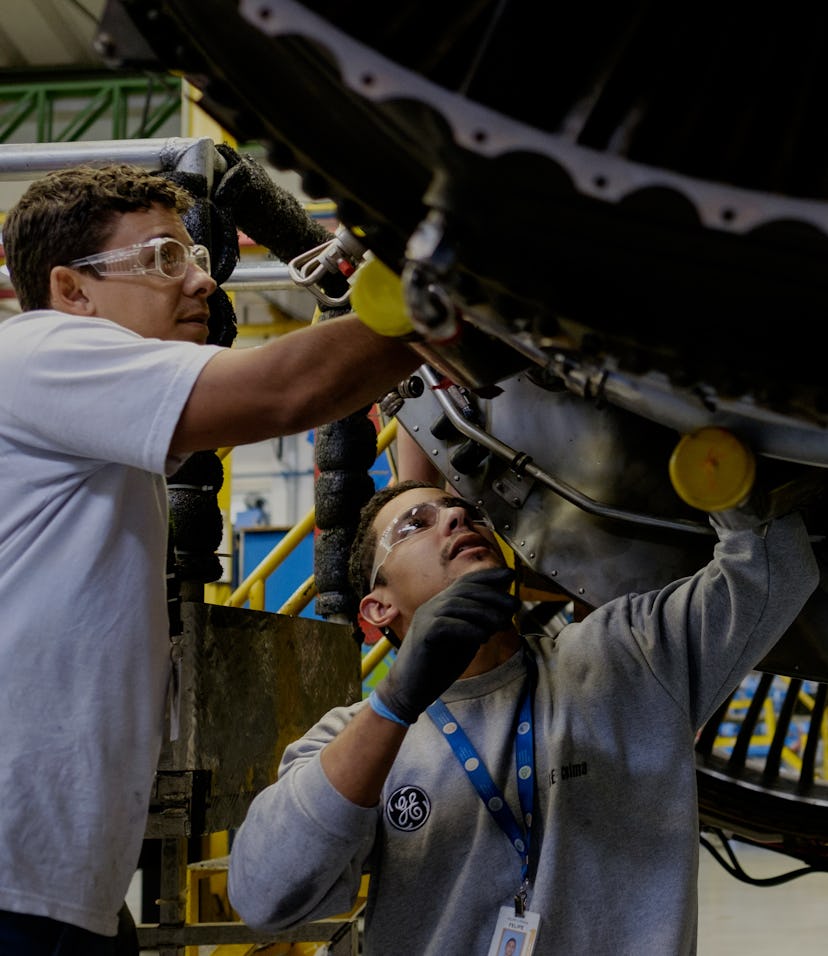Coronavirus
General Electric’s aviation workers are demanding their employer make ventilators
Factories have ground to a halt and GE is laying off staff to cut costs in the face of the ongoing coronavirus crisis.

On Monday, General Electric factory workers in two locations staged protests demanding the company shift some of its aviation production facilities to building ventilators, according to Motherboard. The workers are part of the Industrial Division of Communication Workers of America (IUE-CWA) union and said in a press conference the reduction of GE’s workforce that's underway would also affect the company’s ability to produce ventilators.
Protests took place at GE’s Aviation facility in Lynn, Massachusetts and at the company’s headquarters in nearby Boston. GE recently announced a wave of cost-saving measures which has greatly diminished its active workforce in its aviation division. Meanwhile, workers say the company should assist in producing ventilators, which are crucial for saving the lives of those worst afflicted by the coronavirus.
What’s GE up to? — Ford is working with GE — which is, incidentally, already a leading manufacturer of ventilators — to streamline the production of more ventilators. The protests are also the result of a March 23 update from GE where it announced layoffs of about 2,600 aviation employees, a temporary halving of its maintenance staff, and the performative halving of the salary of GE’s Aviation CEO while GE’s Chairman has taken himself off payroll for the rest of the year.
These cuts, announced prior to the passage of the relief bill, are expected to save $500 million to $1 billion. The recently passed relief bill has slated $500 billion for corporations, mainly via Federal Reserve loans, with $17 billion earmarked for companies vital to national security. Though a prime candidate for this special fund, a GE spokesperson told The Wall Street Journal the company has no plans to take advantage of it.
“Our country depends on these highly skilled workers and now they’re wondering why they are facing layoffs instead of having the opportunity to use their unbelievable skills to help save lives,” CWA President Chris Shelton told Motherboard.
The Lynn GE Aviation facility mainly supports the U.S. military and employees are already back at work. GE plans to maintain any ongoing work at its aviation locations in lieu of completely changing the infrastructure there. Meanwhile, as the aviation division haemorrhages employees, the healthcare division is adding more workers and shifts for 24-hour production of ventilators.
“GE is working around the clock to increase production of much-needed medical equipment,” said a GE spokesperson. “GE Healthcare has already doubled ventilator production capacity, with a plan to double it again by June.”
Today, Ford announced that through its partnership with GE, it will make 50,000 ventilators in the next 100 days and it will be able to produce 30,000 a month from that point on, as necessary. At first, production will be slow, with only 1,500 rolling out in April, but it should ramp up dramatically in the coming months
Leave it to the professionals — As easy as it is to be mad at a corporation for not doing more for the healthcare sector at this time, some workers and facilities are simply more qualified than others to make the manufacturing leap. Dyson, a company famous for innovations in manipulating air, is making 15,000 ventilators to meet both the U.K. and global need.
Meanwhile, though certainly brilliant in their own right, the jump is a bit bigger for those working for aviation or automotive companies like Tesla (though Elon Musk is certainly complicating the issue). Leading ventilator manufacturer Dräger recently stated converting automobile factories is "not so simple," so imagine doing so to a facility built to make jet engines. It’s the Armageddon question: instead of training oil drillers to be astronauts, wouldn’t it be simpler to train astronauts to drill?